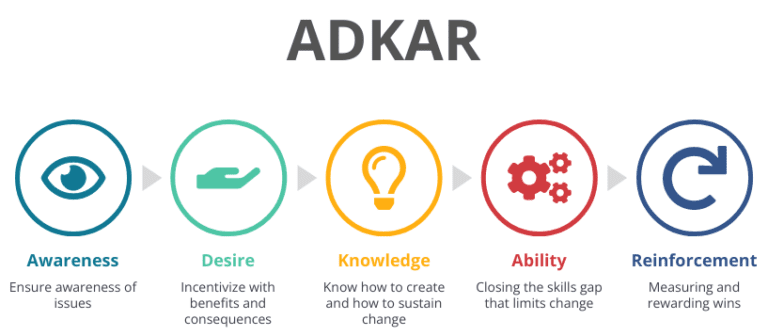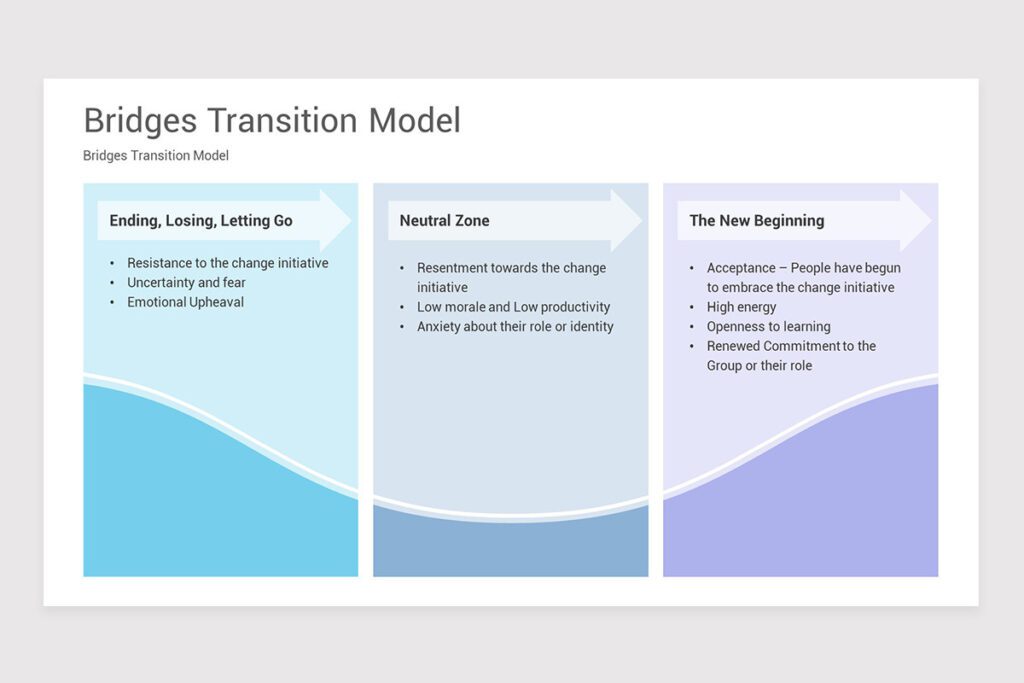Other Change Management Models
Change management models are frameworks for understanding how organisations adopt and adapt to change.

Prosci ADKAR
Prosci ADKAR is an organisational change management model that provides a simple, practical, and effective approach to individual change. It stands for Awareness, Desire, Knowledge, Ability, and Reinforcement. It is a process that helps individuals understand, accept, and adopt change to achieve successful outcomes. The goal of Prosci ADKAR is to enable individuals to transition successfully through the change process so that the desired results can be achieved.

Change Curve
The Change Curve – Five Stages of Grief developed by Elizabeth Kubler-Ross provides a framework for understanding the emotional process of grief, helping to normalise and validate the feelings of loss.
The Five Stages of Grief are denial, anger, bargaining, depression, and acceptance. Each stage is a process that a person goes through as they cope with the psychological and physical effects of loss. The stages are not linear, and they may overlap or occur in a different order. Individuals may also experience more than one stage at a time.
Change practitioners use this model as a starting point for understanding how people react to loss. They may modify it to create a more personalised approach for their clients, such as adding additional stages or creating an individualised timeline for the grieving process. Practitioners may also use different techniques to help clients move through each stage, such as cognitive-behavioural therapy, creative visualisation, or mindfulness practices.

The Bridges Stages of Transition Model
The Bridges Stages of Transition Model, developed by William Bridges, is a three-stage process of transition management designed to help individuals and organisations move through change. This model is based on the idea that transition is a psychological process that involves letting go of the past, embracing the present, and preparing for the future.
The three stages of the model are:
- Ending, Losing, and Letting Go
- The Neutral Zone
- The New Beginning
The first stage is the most important and requires individuals to recognise that a change is occurring and accept the reality of what is being lost. The second stage is the most difficult, as individuals must move through a period of ambiguity and confusion as they work through the difficult emotions of change. The final stage is the most rewarding, as individuals begin to see the potential of the new situation and start to create a new identity and outlook in the new environment.
